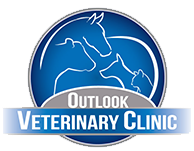Library
-
Linezolid is an antibiotic used to treat multi-drug-resistant, gram-positive bacterial infections in cats and dogs. Its use is limited to susceptible infections with documented resistance to other antimicrobials. Its use is off label in veterinary medicine. Linezolid comes in tablet and powder forms that may be compounded into liquid.
-
LinkSkin® Spray is a topical solution designed to support the skin barrier in dogs and cats by restoring the balance of microflora on the skin. It contains heat-killed lactobacilli and can help prevent skin infections caused by bacteria and yeast.
-
A lipoma is a common, usually benign (harmless) fat tumor seen in middle-aged to older animals. These tumors occur often in dogs and infrequently in cats. The malignant form of this tumor is called a liposarcoma. Liposarcomas usually do not spread, but they require more extensive surgery to control.
-
The liver is an important organ necessary for controlling many different body functions. Signs of liver disease in cats include increased drinking and urination, abdominal swelling, jaundice, digestive upset, and weight loss. Signs, diagnostics, and treatments are discussed.
-
Platynosomiasis is a disease caused by a parasitic worm called a liver fluke. It affects cats in tropical and subtropical regions. The lifecycle is complex and involves several hosts. Cats can become infected by ingesting lizards or amphibians that have the larval stages of the fluke. The flukes live in the bile ducts and gall bladder of affected cats, causing symptoms of liver disease.
-
Liver fluke (Heterobilharzia americana) is a parasitic worm that affects dogs in the southern Atlantic and Gulf states and causes a disease called schistosomiasis. The fluke’s lifecycle is complex and involves a freshwater snail. Dogs can become infected by swimming or wading in water that has the larval stages of the fluke. The flukes cause granulomas (inflammatory nodules) to form in the liver, intestines, and other abdominal organs. Symptoms of gastrointestinal and liver disease may be present.
-
Primary liver tumors in dogs and cats are rare. There are 4 types: hepatocellular tumors, bile duct tumors, neuroendocrine tumors, and sarcomas. These cancers can be massive, nodular, or diffuse in form. In dogs, most liver tumors are malignant, while in cats, most are benign.
-
Cats can have hearing loss due to increasing age or chronic ear infections, or they may be born with a defect. Deafness in cats can present some challenges, but overall they can have healthy, normal lives. It is possible to teach your cat household routines by using hand signals and body language. It is important to take their deafness into account when considering their safety, and they must remain indoors or in outdoor enclosures.
-
Dogs can have hearing loss due to increasing age or chronic ear infections, or they may be born with a defect. Deafness in dogs can present some challenges, but overall they can have healthy, normal lives. Training is still possible by making some modifications and incorporating hand signals. It is important to take their deafness into account when considering their safety and ensure that they are never off leash on or near a street.
-
Lokivetmab is given by injection and is used on and off label to treat itchiness in dogs. Give as directed. Side effects are uncommon but may include vomiting, diarrhea, sleepiness, lack of appetite, or pain at the injection site. Do not use in pets that are allergic to it. If a negative reaction occurs, please call the veterinary office.

